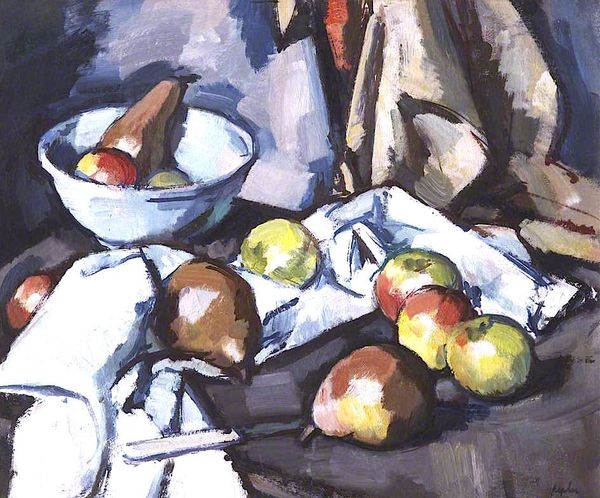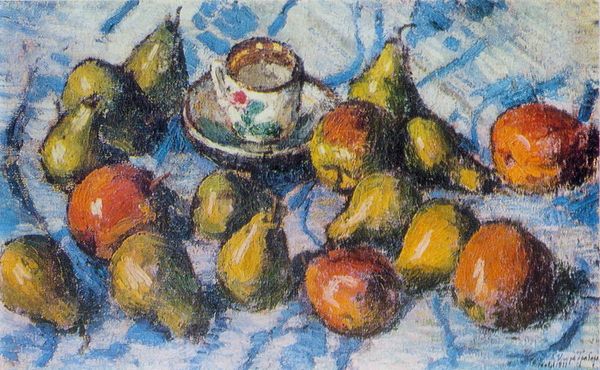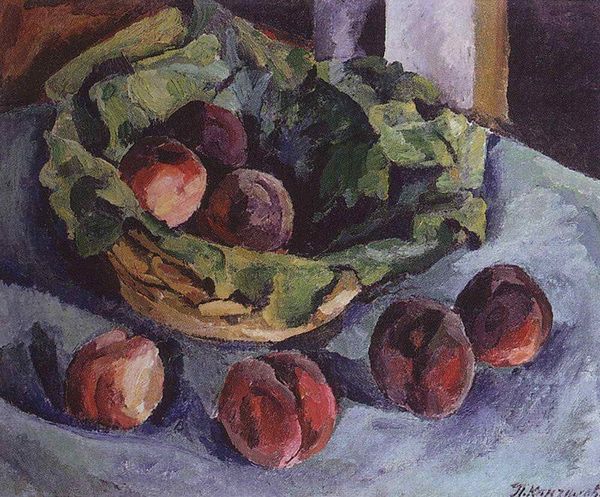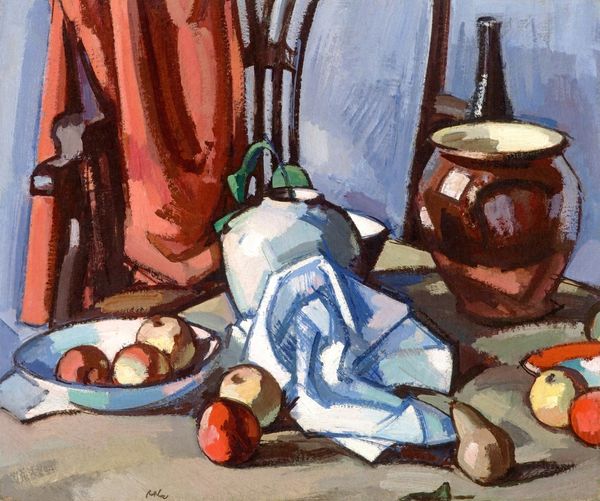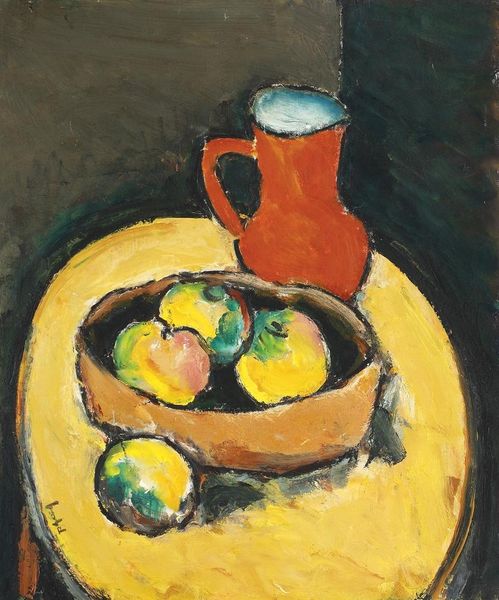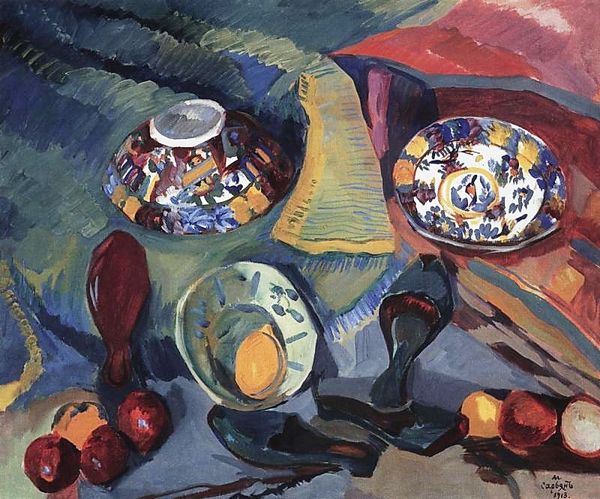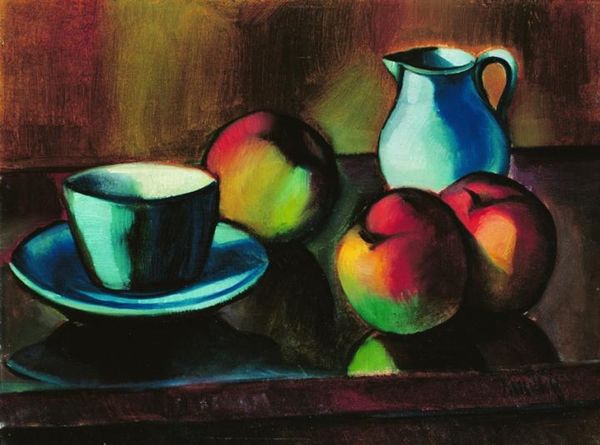
Dimensions: 64.2 x 81 cm
Copyright: Public domain US
Editor: We're looking at Pyotr Konchalovsky’s “Still Life. Peaches,” painted in 1916 using oil paint. The impasto technique really brings the textures to life. What I find most striking is how the bright fruit practically jumps out from the subdued purples and grays of the background. What do you see in this piece? Curator: Initially, I'm struck by the structural tension Konchalovsky establishes between the organic forms and the geometric underpinnings. Note the carefully arranged peaches and pears against the structured verticality of the stacked cups. The color palette too creates tension: warm hues versus cool tones. The surface appears to vibrate between texture and color. How does this tension impact your viewing? Editor: That's interesting; I hadn't really considered that juxtaposition of organic and geometric forms! The tension between warm and cool is clear, but what purpose might that compositional structure serve? Curator: In focusing on intrinsic elements like shape, color, and arrangement, Konchalovsky highlights their relational impact. He allows us to experience the fruit as *form* first, before its categorization as *fruit*. The composition emphasizes their pure aesthetic presence and invites closer sensory analysis. Don’t you agree that its abstraction brings a certain modernity to a traditional genre? Editor: I do see that. It really breaks down the still life to its core components – shapes, colors, textures – divorced from the narrative we might usually expect. It almost becomes about the act of seeing itself! Curator: Precisely. The essence of the work rests on the way the artist orchestrates these formal qualities, allowing the viewer to interpret based on observation alone. It minimizes external reference, pushing towards a self-contained aesthetic experience. It truly shifts your focus towards its internal formal logic, wouldn’t you agree? Editor: Absolutely! Considering the piece this way provides a richer appreciation for the artist's deliberate choices, shifting my focus from 'what' is depicted to 'how' it’s depicted. Curator: Indeed, the work functions through the interplay of its components, rewarding close and thoughtful inspection of structure.
Comments
No comments
Be the first to comment and join the conversation on the ultimate creative platform.

